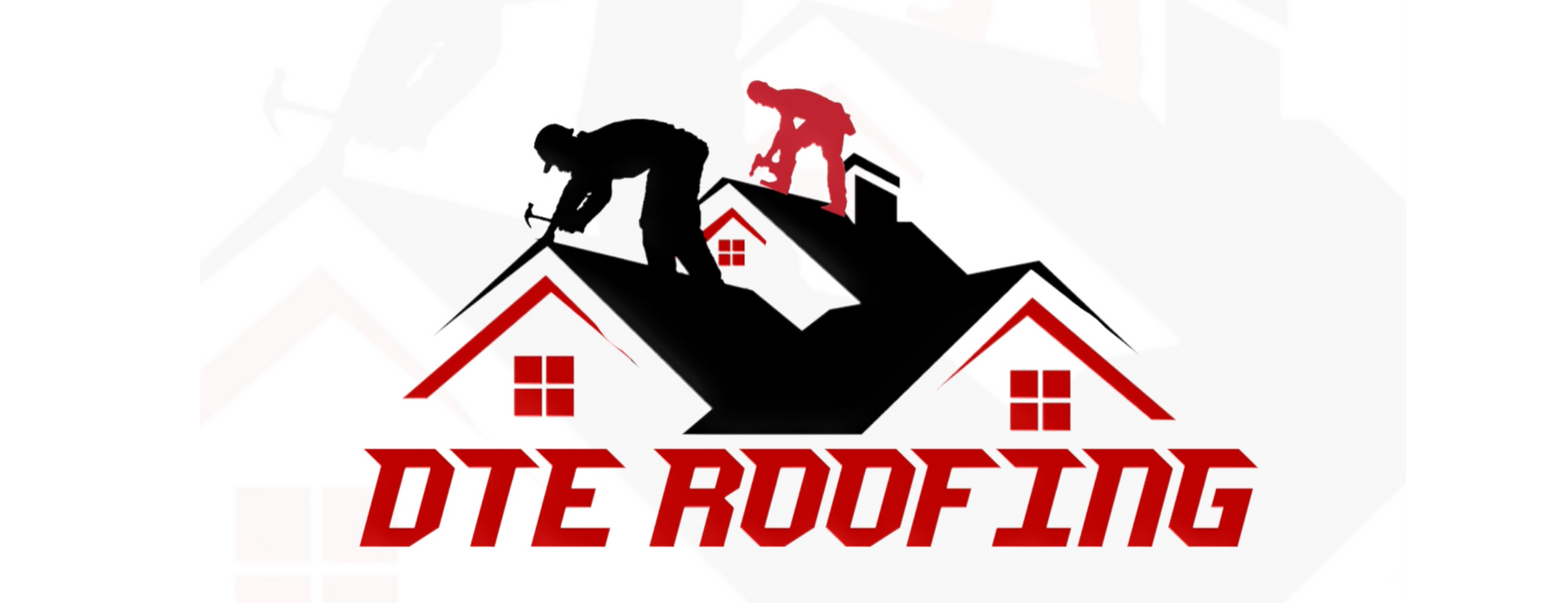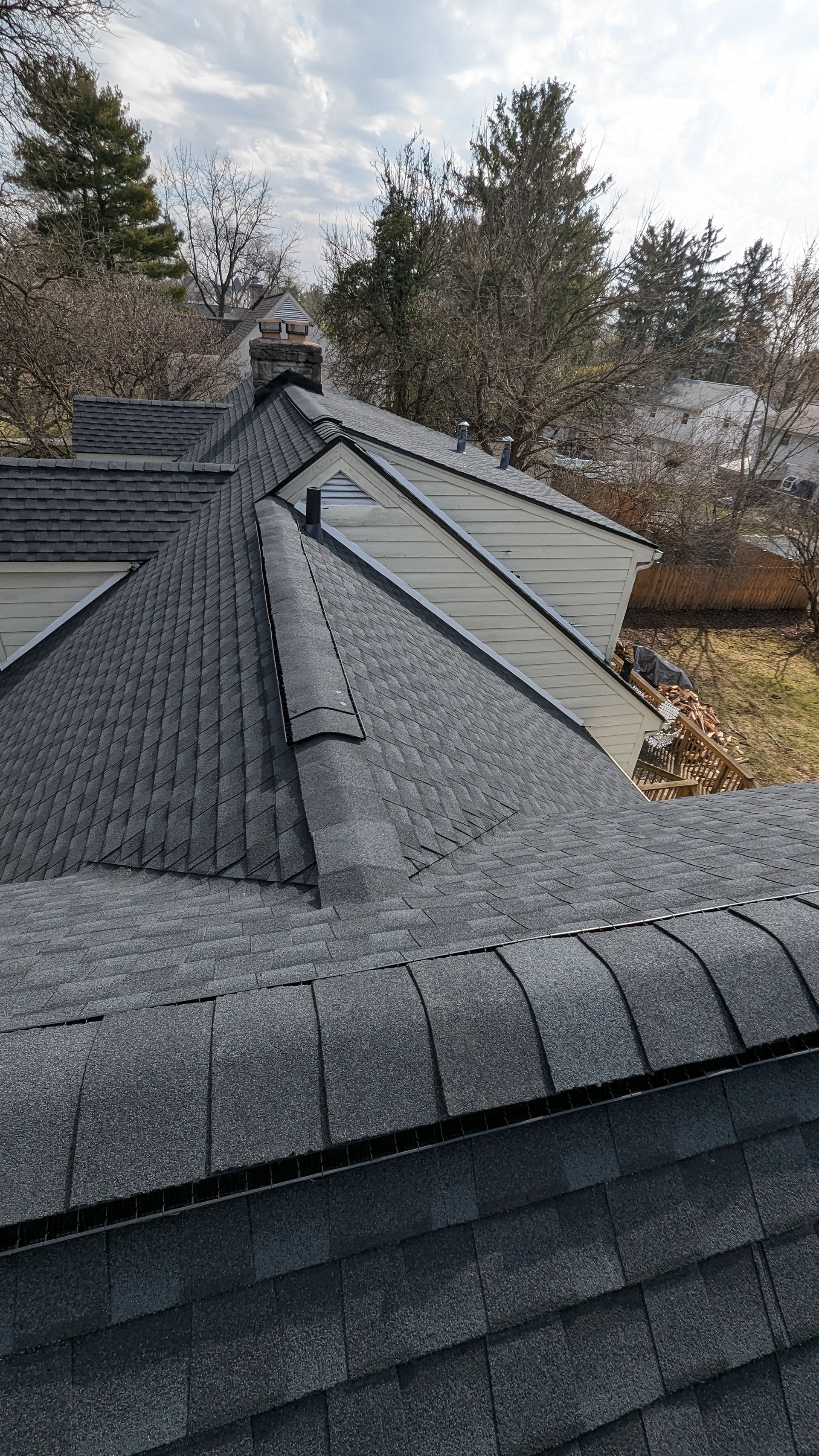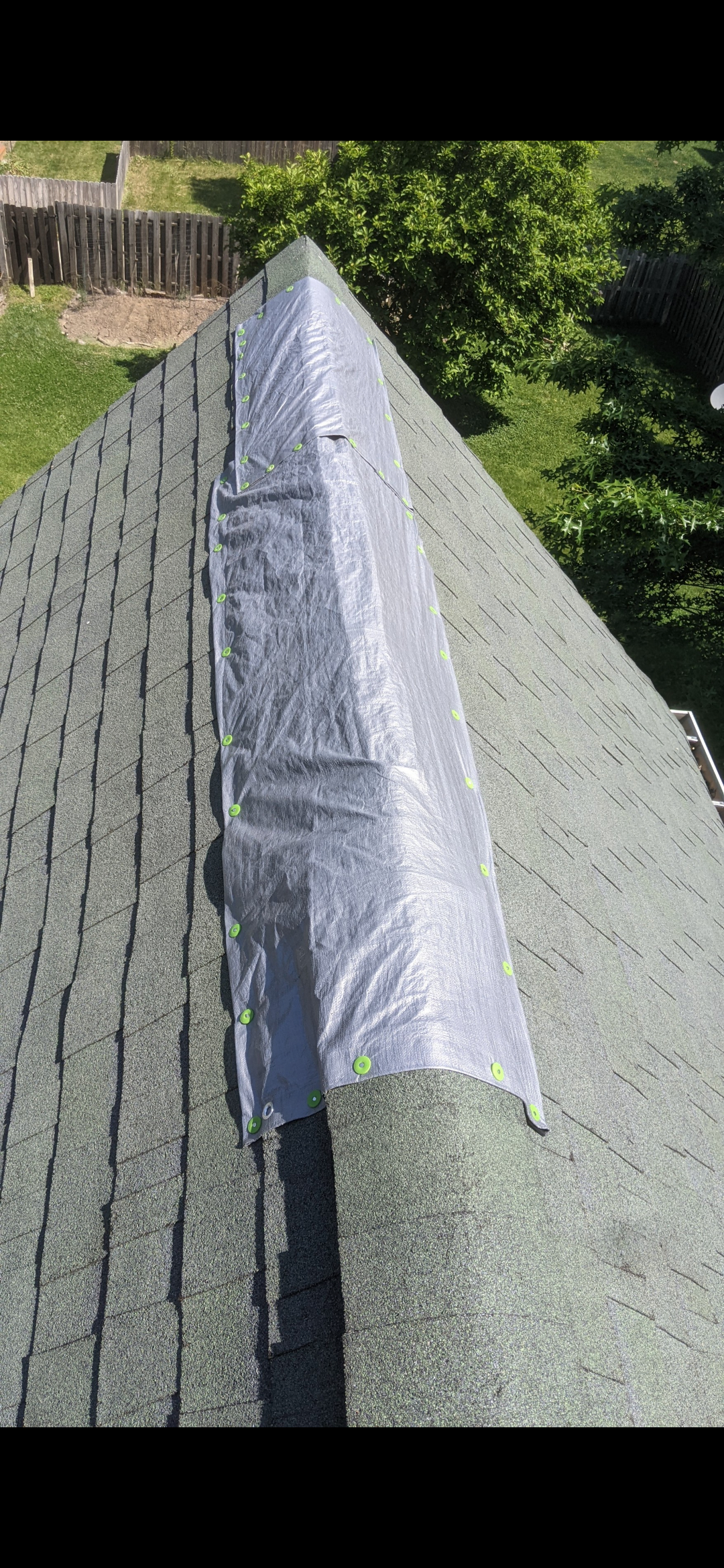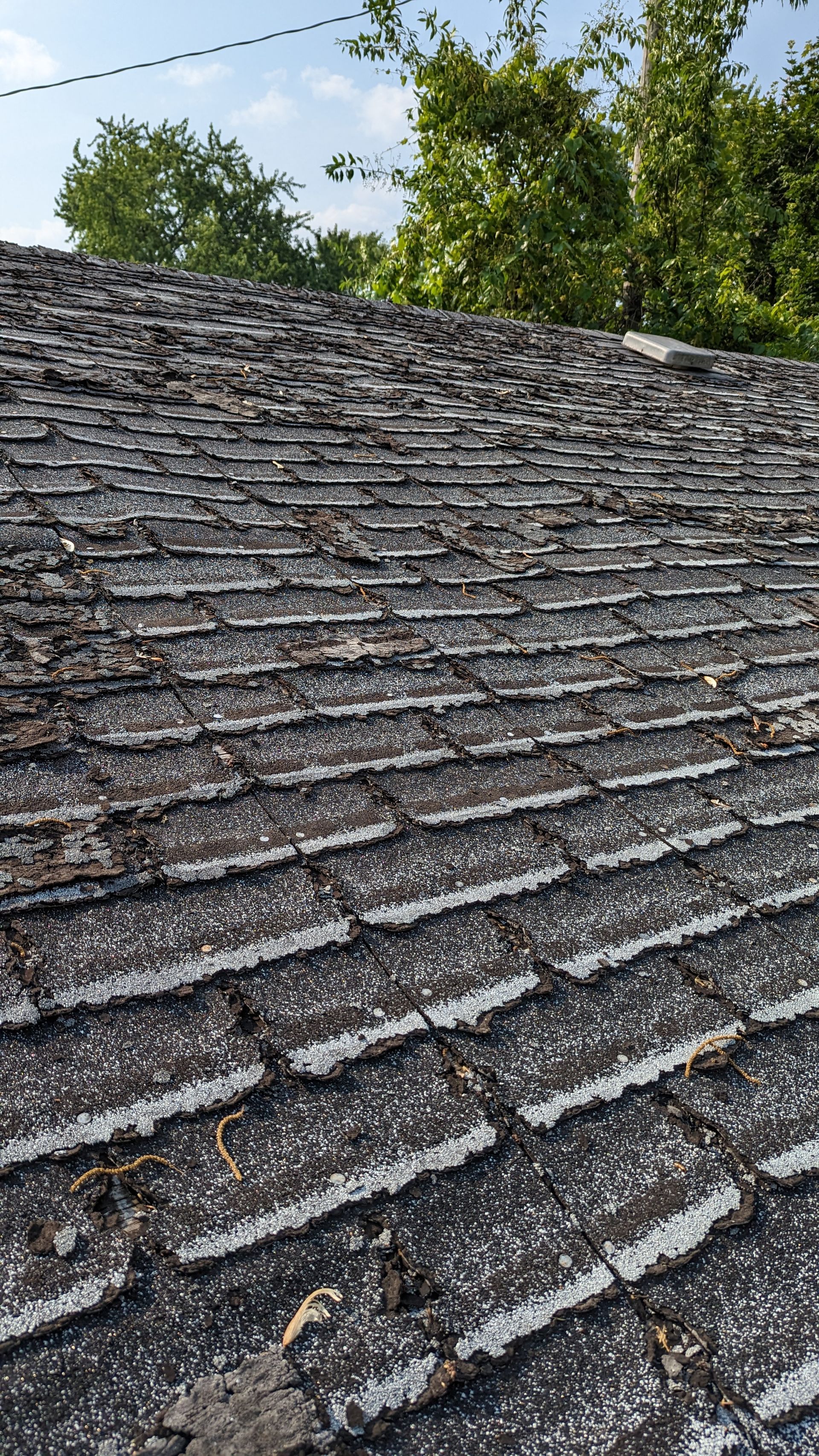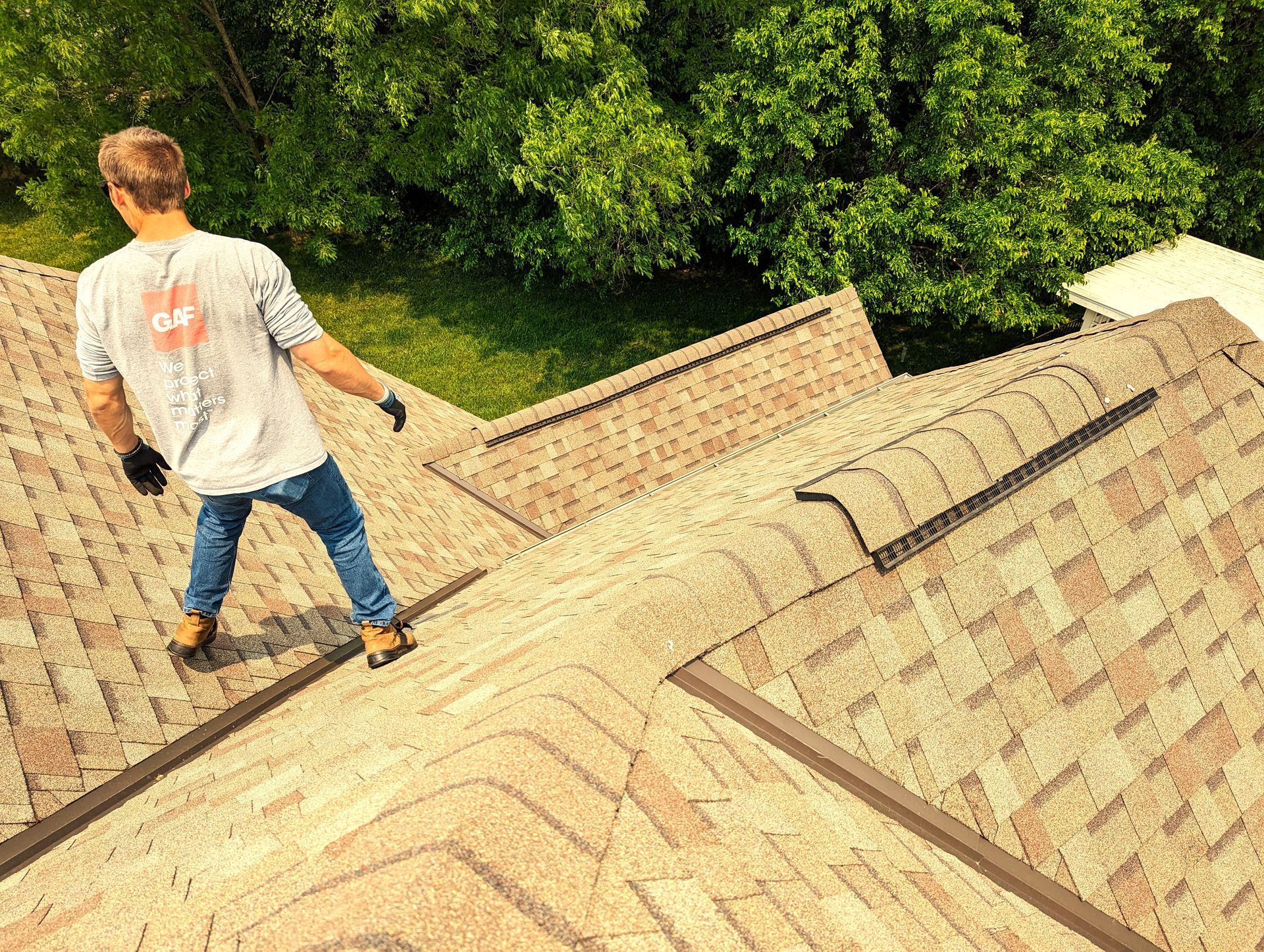What are all the components of a properly installed, high quality asphalt roof system?
The Eight Components of a quality roof system.
An asphalt roof system is comprised of eight primary components. Some roofs have more complexities such as skylights, roof windows, chimneys, and low slopes that require a different product other than shingles. This article gives an overview of the foundation of building materials that make up most every roof.
- Solidly sheathed decking, free of holes, gaps, or rot. The roof deck is arguably the most important component of the roof system. This is the base on which the rest of the system will be applied, and it is important to ensure we are able to nail everything else to a surface which will firmly hold a nail, and not have nails fired into excessive spaces between boards/sheets.
- Ice and Water barrier. Also known as ice and water shield, or a leak barrier, this refers to a self adhered, modified bitumen surface applied to the roof in areas the most susceptible to ice damming in northern regions. An appropriate leak barrier is also capable of "self sealing" around any penetrations or nails put into it. This is a requirement of locally enforced building codes all across Ohio, and a certain amount must be applied to remain compliant in certain areas. For example, at all "eaves" (wherever there is a gutter) we must apply enough leak barrier so as to past a point on the roof that is at least 2 feet past the interior wall point. For most standard soffit depths, this will require the use of two, 3 foot wide rolls of this material, and sometimes more for homes with bigger soffits, or very steep roofs.
- Drip Edge/Gutter Apron Flashing. Commonly known as "edge metal" this component is exactly what is sounds like, and goes along the entire perimeter of the roof system. At all eaves (where the gutters are) gutter apron flashing is used to ensure water dripping off the edge of the shingles makes its way into the gutters and not behind a fascia board. On all rake edges (A roof edge angled up towards a peak, with no gutter) a slightly different profile of edge metal is used called drip edge. Drip edge will extend about 2-3 inches underneath the shingles, and bend down to cover the top of a fascia board about 1-1.5 inches. This protects against the possibility of wind driven rain from getting under the shingles, and also from getting behind the fascia boards and rotting them out over time.
- Roof deck protection, synthetic underlayment. The use of an appropriate underlayment is important to ensure the integrity of the system. Asphalt shingles themselves are a "water shedding" surface, but they are not waterproof alone. A second layer of protection is needed if for whatever reason water is able to get underneath the shingles, whether the water is blown in by strong wind, or shingles are blown off leaving large sections exposed temporarily, the underlayment acts as an additional layer of defense. A good underlayment also acts as a vapor barrier, keeping condensation/moisture underneath the shingles from saturating the roof decking. Commonly used sheathing products, like oriented strand boards (OSB), can become particularly vulnerable to absorbing moisture and buckling/warping. A good underlayment will also conversely allow moisture trapped underneath in the sheathing to escape, as the material is slightly permeable or "breathable". Underlayment itself is not intended to be relied on as a waterproofing surface for long periods of time if left exposed to the elements, it is only classified as "water resistant". Many contractors will use underlayment as a temporary covering in lieu of a proper water proof tarp, this is ill-advised as after a certain period of time left exposed to the elements, the underlayment will deteriorate much faster than an actual tarp material.
- Starter Shingles. These are special shingles designed to go on all of the edges of your roof. They act as extra reinforcement throughout the perimeter of your roof, in the areas that are susceptible to wind blow off.
- Field Shingles. These are the shingles that cover the vast majority of your roof. They lay across all of the flat surfaces, and are installed from the bottom of the roof slopes in a staggered pattern up to the top. Each shingle is overlapped, and the "Headlap" is the portion of a shingle that is covered up by two rows of shingles above them. This overlap is what allows water to "shed" down the roof slope. Each time the water falls off the bottom edge of a shingle, it lands on the top surface of the shingle below, and repeats this all the way down to the gutters. With the overlap, each shingle is essentially nailed twice. When nailing the shingle on the row above another, the nails will penetrate the very top section of the "headlap", on the shingle below, and achieve "secondary nailing".
- Attic Ventilation. This is another crucial variable to the longevity, or lack thereof, of your roof system. Attic ventilation refers to the cycling of air in the attic space. The reason this is so important in relation to life expectancy of your asphalt shingle system, is because of its influence of the surface temperature of the shingles. Asphalt shingles contain "volatile" substances that keep them pliable. Volatile means a low boiling point, and once a shingle comes off the manufacturing line, the clock starts ticking and these substances are already "boiling" out of the material and it is aging. Eventually the shingles lose most of this, and they become brittle, lose their granule protective coating, and eventually "wear out", no longer serving their purpose of shedding water. Holes can develop exposing the fiberglass base, and water can seep in. At this point a roof in such a condition would need replaced, and what's the one thing that speeds up this process drastically? The roof surface temperature! The hotter the shingles get, the faster the volatile substance boil out. Attic ventilation plays a huge part in controlling the temperature on the surfaces. If you've popped your head up into your unconditioned attic on a hot summer day, it gets really hot in there! Temperatures well in excess of 150 degrees are common even on moderately hot days with direct sunlight. If you have inadequate attic ventilation, you'll basically have "stagnant" air up there. If air can't circulate, it will continue to get hotter and hotter, and lead prematurely to what we call a "smoked roof". The proper balance of an "intake" and "exhaust" system working in tandem is important, and there is a lot of misconceptions/misunderstanding held by contractors who have not educated themselves with the most current information available. Every roof is different, and a specific equation based on the square footage of the attic floor and a few other variables needs to be discussed to design the most efficient system. The most important thing to avoid that we see all too often is mixing 2 different styles of exhaust systems. This always results in the two exhaust styles competing against each other, and the stronger exhaust turns the weaker exhaust effectively into the intake, and no air will be drawn into the true intake system, creating stagnant pockets in your lower attic. Proper attic ventilation will be covered in a separate deep dive blog post, as this is a very important, albeit complicated subject itself.
- Hip/ridge cap shingles. These are shingles specifically designed with a slightly more pliable blend of asphalt and are designed to bend/curve over the hips and ridges on your roof, without cracking down the middle. These special shingles cost more money than other methods sometimes used in the industry.
It's important when you are doing a roof project, that each of these items are used and used in the correct places on your roof system. The quality of each individual component your contractor is installing on your new roof should also be something you pay attention to. We see roof projects going on all the time with cheaper building materials in each category being used, and even certain components being left off entirely. If you're currently in the process of getting a new roof, reach out to us for a free consultation to see if we may be able to help you too, and ensure you get the highest quality system you pay for.
